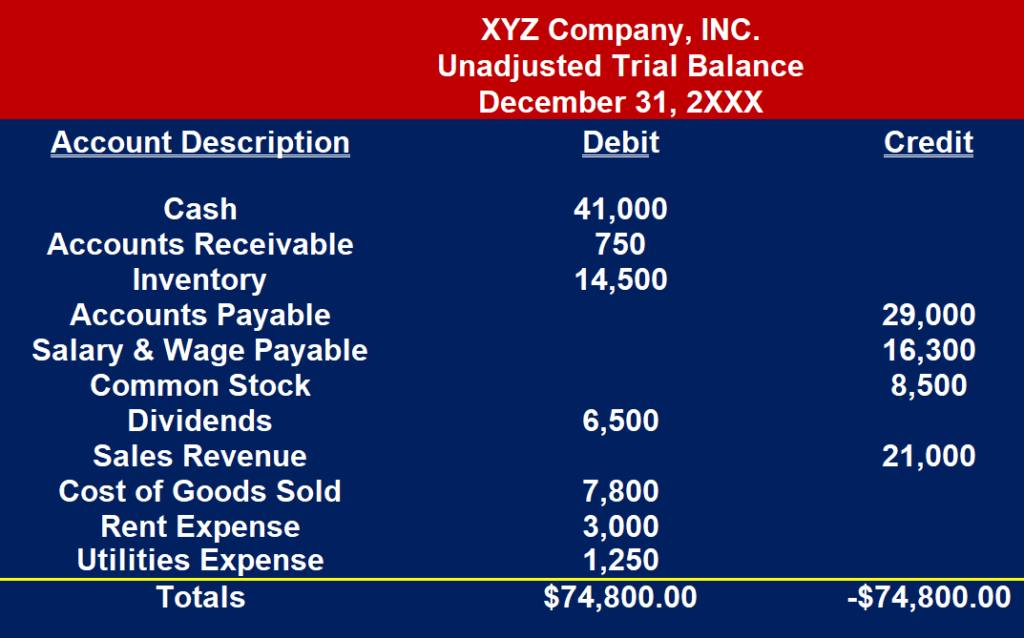Trial balance is a report that verifies mathematically that all ledger accounts in terms of debits and credits are equal at a certain point of time.

A trial balance is a two-column report, one for debits and one for credits, that shows the final balances of a company’s ledger accounts.
Trial balance is usually prepared at the end of an accounting period to ensure all bookkeeping entries are mathematically correct and that total debits is equal to total credits.
The term Trial balance is based on the idea that the total ending balances of both debits and credits need to be equal in the general ledger before proceeding in the audit process, or filing a tax return, and issuing financial statements (income statement, balance sheet, and cash flow).
Trial Balance Features
Here are the main features of the trial balance report:
1- Trial balance shows the balances of all general ledger accounts (GL).
2- Total Debits on one side must equal total Credits on the other side of the report.
3-The report is usually prepared at the end of an accounting period.
4- Trial balance report is not part of the main financial statements, but it is used as the foundation to build the financial statements.
5- GL accounts with zero (0) balances or inactive will not be shown.
6-Even if trial balance report shows a total of debits equal to total of credits does not mean that the report is free of error.
7- With computerized accounting, a trial balance report is created automatically with a click of a button.
Trial Balance Rules
There are certain rules to follow while preparing a trial balance. The rules are as follows:
- All business assets must be in the debit column.
- All business expenses must be in the debit amount column
Trial Balance Format
Here are the main features of the trial balance format:
- A heading that identifies the company
- Report name
- Accounting period date
- Account number
- Account name
- Ending debit balance
- Ending credit balance
Trial Balance Sample
Here is a sample of a trial balance report:

Trial Balance Types
Here are the different types of trial balance reports:
1- Unadjusted Trial Balance: When the trial balance is first printed it’s called Unadjusted Trial Balance.
2- Adjusted Trial Balance: After making corrections and any necessary adjustments, the report is called Adjusted Trial Balance.
3- Post Closing Trial Balance: Once the accounting period is closed, the report is called Post-Closing Trial Balance.
Leave a Reply